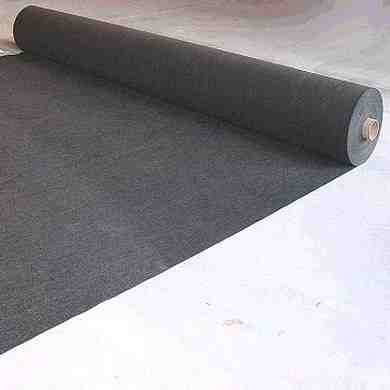Weed Control Fabrics - What are they and How and Where to Use Fabrics

All landscape weed control fabrics are not created equal, depending on the area that needs covering. There are non-woven (spun bound) fabrics manufactured via a process where continuous filaments of polypropylene are spun into a multidirectional web that is thermally and mechanically bonded. The process creates a fabric that is superior in strength and durability with excellent properties for air and water permeability. Fabrics that are woven are also called geotextiles, a synthetic material, by a process called needle punching – in which numerous barbed needles are pushed through one or more fibre mats causing these mats to become mechanically entangled due to the process. The resulting product is a strong, breathable material that allows air circulation, water permeability between soil and mulch, and is used in projects such as heavy traffic areas, erosion projects, etc. where a strong material is required.
Tips on Preparation: For maximum results, thoroughly remove or kill any existing weeds from the installation area. The use of a systemic herbicide may be required and a pre-emergent herbicide may be desired for additional weed control (always consult the manufacturer's product label) Wait about 1 week, then lay the fabric out, anchor with fixing pegs if necessary.
Weed Control: Weed Fabrics control weeds by smothering weeds that emerge from below by limiting sunlight and access to nutrients that help weed growth. They also prevent weeds that emerge in the mulch above the fabric from penetrating through and getting established in the soil. When weed fabrics are used as directed, they will help keep weeds in the dark and resist tearing and puncturing to keep weeds out of sight.
Permeability: Air, water and nutrients are all vital to plants to survive and with weed fabrics there may be some degree of more or less permeability and the level of weed control – but generally they will allow the good stuff for plants to pass through while keeping most weeds out. A perfect balance.
Durability: Usually fabrics will last between 5-15 years depending on the project and the care to install the fabric. Landscape fabrics are made to resist tearing, puncturing, rot and decay. Spun bonded fabrics should have an application of mulch, bark, gravel, etc applied after they have been laid.
Recommended Uses: Fabrics are used as a physical barrier to help control weeds in flowerbeds, around trees and shrubs, stone walkways, under decks, behind retaining walls, driveways, etc. They act as a separation barrier between the soil and layers of top dress mulch and also act as a stabilisation layer to help reduce soil erosion. They may also be used as a filtration layer around perforated drainpipes to help prevent soil clogging.
Benefits: Weed Fabrics offer excellent properties for permeability of water, air and nutrients to pass through the fabric while helping to prevent most weeds from growing through. This helps provide a low maintenance area. However with any product, it is not 100% weed proof. Perennial weeds that are especially difficult to control may require weed control measures. Further, weed seed germination in mulch on top of the fabric is not prevented, and herbicides can be used for these difficult to control weeds and prevention of seed germination.
What are Weed Control Fabrics made of: Weed Control Fabrics are made from 100% polypropylene (spun bonded) with embedded colorant and UV stabilisers
How long will the Fabrics last: Weed Control Fabrics are UV stabilised and in the absence of direct sunlight, will last many years. However this depends on the strength of the fabric (gsm).
Are Fabrics safe: Weed Control Fabrics are environmentally friendly and will not contaminate water ponds or harm fish, will not cause adverse effects to children or pets.

